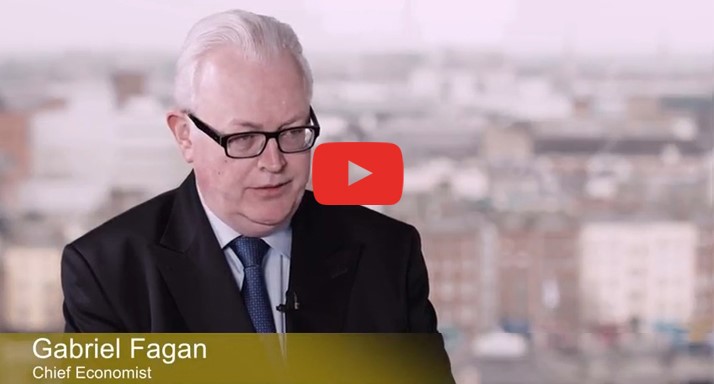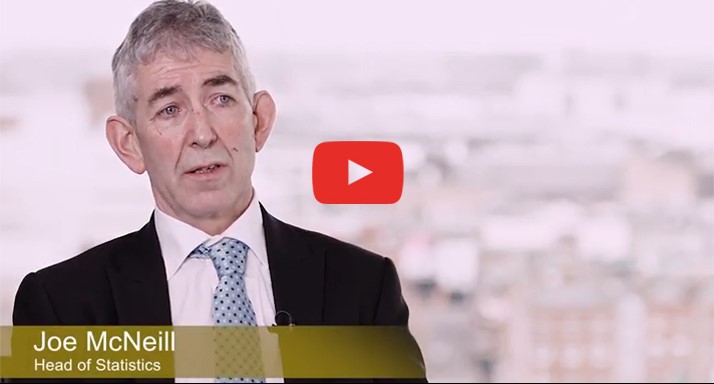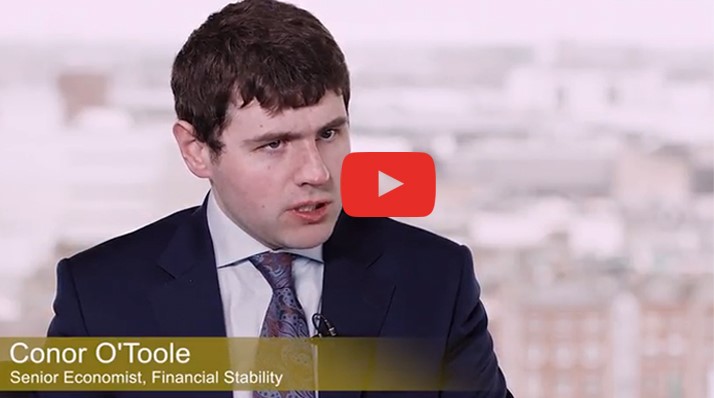Quarterly Bulletin No.2 April 2016
06 December 2016
Quarterly Bulletin Categories
Quarterly Bulletin No.2 2016 was published on 1 April 2016.
Read the full Quarterly Bulletin No. 2 2016 (PDF 7.74MB)
Access the individual sections and watch our economists discuss the Quarterly Bulletin below.
Forecast Summary Table
View the QB2 2016 Forecast Summary Table (PDF 37.89KB).
Comment

Gabriel Fagan, Chief Economist; John Flynn, Head of Irish Economic Analysis and Luca Onorante, Acting Head of Monetary Policy discuss Quarterly Bulletin No.2 2016.
Watch the video on our YouTube channel
The outlook for the Irish economy continues to be broadly favourable. Following GDP growth of 7.8 per cent in 2015, the Bank’s latest forecast is for GDP to grow by 5.1 per cent this year and by 4.2 per cent next year. Economic growth has strengthened and broadened over the last 12-18 months, with National Accounts data indicating that growth gathered pace in second-half of 2015 and that domestic demand is now firmly the main driver of expansion.
Read the full QB2 2016 Comment (PDF 24.4KB).
Tá leagan Gaeilge den Timpeallacht Gheilleagrach ar fáil anseo QB2 2016 An Timpeallacht Gheilleagrach (PDF 25.88KB).
Chapters
Domestic Economy
The outlook for the Irish economy continues to be broadly favourable. Following GDP growth of 7.8 per cent in 2015, the Bank’s latest forecast is for GDP to grow by 5.1 per cent this year and by 4.2 per cent next year. Economic growth has strengthened and broadened, with domestic demand now firmly the main driver of expansion. Looking ahead, domestic factors are set to continue to drive growth in 2016 and 2017, with potential risks to the outlook coming mainly from external factors.
Read the full Chapter: QB2 2016 Domestic Economy (PDF 1.09MB).
Financing Developments in the Irish Economy

Joe McNeill, Head of Statistics discusses the Statistics Chapter in Quarterly Bulletin No.2 2016. Joe also discusses Gavin Doheny and Roisin Flaherty's Signed Article 'An Overview of Enhanced Interest Rates for Ireland'.
Watch the video on our YouTube channel.
Outstanding credit to the real economy continued to decline in recent months, despite improving financing and economic conditions. Repayments of credit facilities outpaced new lending, reflecting the ongoing adjustment of financial and non-financial sector balance sheets. While this might suggest that the economic recovery to date has been somewhat creditless, gross new lending to both households and businesses increased in 2015, with non-financial SMEs recording particularly strong growth in new drawdowns.
Read the full Chapter: Financing Developments in the QB2 2016 Financing Dev in the Irish Economy (PDF 608.11KB).
Developments in the Euro Area Economy
The euro area economic recovery remains moderate, largely reflecting the drag from weak external conditions. Downward revisions to the inflation outlook prompted a substantial review of the ECB’s monetary policy stance in March, resulting in a comprehensive policy package. Looking ahead, economic recovery is expected to remain modest, with only a gradual pick-up in inflation in prospect. The chapter includes two boxes which look at the role of oil prices in determining inflation expectations and the impact of the forthcoming inclusion of the Chinese Renminbi in the IMF SDR basket.
Read the full Chapter: Developments in the Euro Area Economy (PDF 709.03KB).
Signed Articles
Understanding SME Interest Rate Variation Across Europe
by James Carroll and Fergal McCann
The European Small and Medium Enterprise (SME) credit market has been characterised by sharp divergences in borrowing costs facing firms since the financial crisis. We show that these differences are not well-explained by the characteristics of the companies themselves, and rather must have aggregate macroeconomic, financial and institutional explanations. We show that SME borrowing costs are higher in countries with higher stocks of defaulted SME loans; higher probability of future SME default; higher national unemployment; more severe perceptions of banking sector financial stress; higher government borrowing costs; weaker levels of bank competition.
Read the full Signed Article: QB2 2016 Understanding SME Interest Rate (PDF 476.35KB).
Irish SME Investment in Economic Recovery
by James Carroll, Paul Mooney and Conor O'Toole

Conor O'Toole, Senior Economist discusses the Signed Article 'Irish SME Investment in Economic Recovery' with Gabriel Fagan, Chief Economist.
Watch the video on our YouTube channel
Ireland’s economy is recovering strongly. However, little is known about small and medium-sized enterprise (SME) investment since the recovery began. We address this question and find that the share of SMEs investing has increased steadily since 2012. This is particularly the case for smaller, domestically-focused enterprises. These enterprises are more likely to be reacting to improvements in the domestic economy. We also find that the majority of SME investment is funded by retained earnings.
Read the full Signed Article: QB2 2016 Irish SME Economic Investment (PDF 441.54KB).
An Overview of the Enhanced Interest Rate Statistics for Ireland
by Gavin Doheny and Róisín Flaherty
An enhanced interest rate statistics framework was implemented in Ireland and across the euro area at the beginning of 2015, facilitating a more precise assessment of household and NFC developments. The enhanced statistics show that new business mortgage rates for Ireland were significantly impacted by renegotiations, a trend which is not evident across the euro area. The new data for Ireland also highlight a shift from floating rate to fixed rate mortgages, and significant variations in rates charged to SMEs depending on their sector of economic activity.
Read the full Signed Article: An Overview of the Enhanced Interest Rate Statistics for Ireland (PDF 539.17KB)
Statistical Appendix
Read the full Statistical Appendix (PDF 26.24KB)